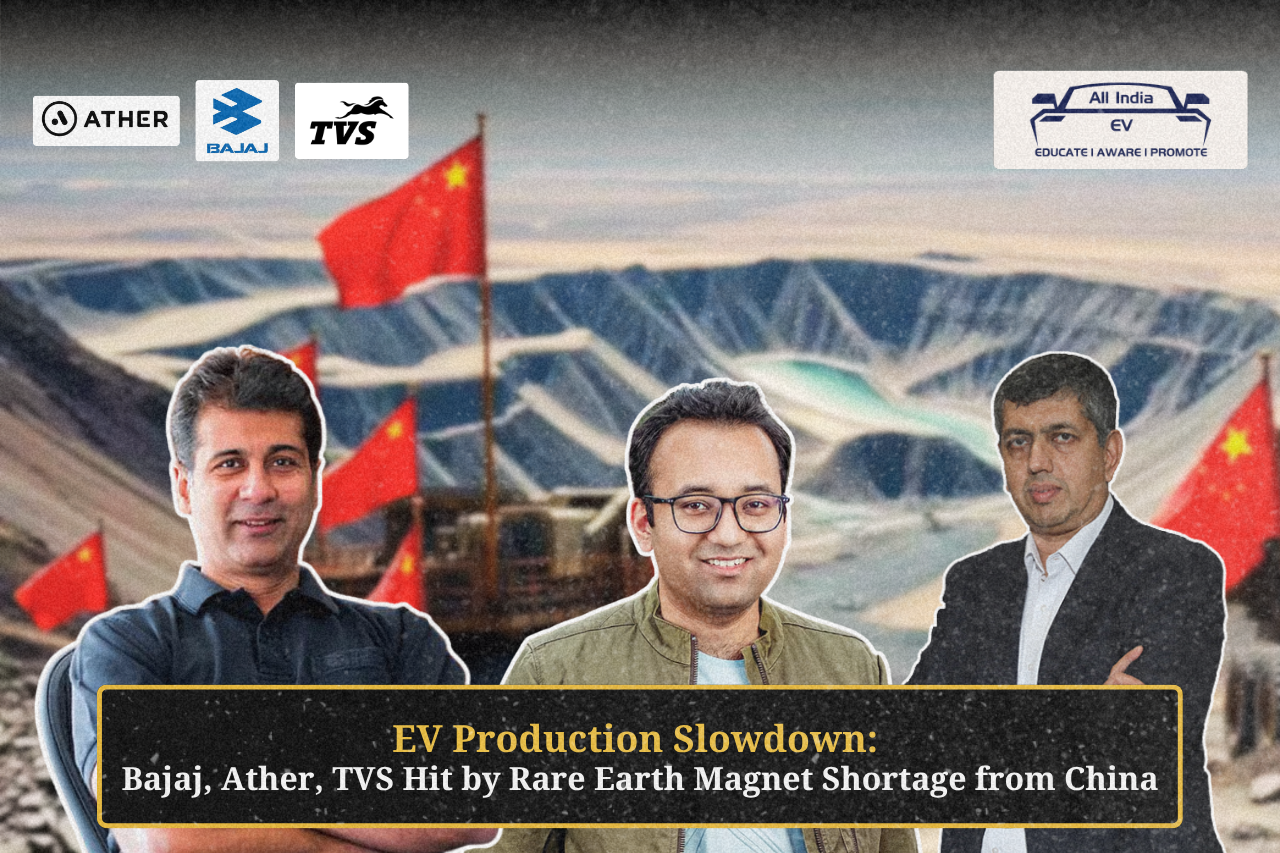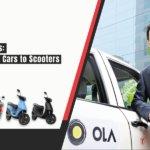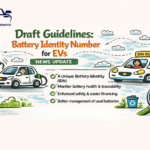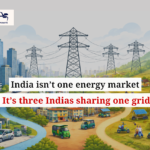
Bajaj, Ather, TVS to Cut EV Output as Rare Earth Magnet Crisis Worsens; Ola Electric to Maintain or Boost EV production Amid China’s Export Curbs
India’s leading electric two-wheeler manufacturers — Bajaj Auto, Ather Energy, and TVS Motor Company — are set to cut EV production this month, as a persistent shortage of rare earth magnets from China stretches into its fourth consecutive month.
⚠️ Supply Crunch Threatens EV Sector Growth
The shortage of heavy rare earth (HRE) magnets, vital for electric traction motors, has disrupted operations across key players, threatening the momentum of the country’s rapidly growing EV segment.
- Bajaj Auto, the country’s second-largest e-two-wheeler maker, may slash output by up to 50%
- Ather Energy plans a 8–10% reduction in production
- TVS Motor, a recent sales leader, is also expected to pare output
“Disruptions in the EV supply chain, particularly concerning magnet availability, continue to pose challenges in the short to medium term,” said a TVS Motor spokesperson.
🔋 Ola Electric Remains Unaffected – For Now
Amid this crisis, Ola Electric has managed to maintain uninterrupted production, thanks to a stockpile of rare earth magnets.
“There is no impact on production because of the rare earth magnets,”
— Ola Electric spokesperson
Sources suggest Ola has inventory to last 5–6 months and may even increase production slightly in July. However, this comes as the company slips to third place in June, marking its second consecutive month of underperformance.
💥 Industry Warns of Sector-Wide Disruptions
These four companies account for 80% of all e-two-wheelers sold in India. With no progress in resuming imports from China, industry executives fear broader disruptions if the shortage continues.
“TVS, Bajaj, and Ather are the first to be hit, but the entire segment could face disruption if the issue drags on,”
— Senior industry executive
The Society of Indian Automobile Manufacturers (SIAM) had earlier warned that dwindling inventories could soon force manufacturers to scale back output.
🌏 India Turns to Alternative Sources
Amid the standoff with China, Indian EV makers and government bodies are engaging in talks with Vietnam, Indonesia, and Japan to secure alternative magnet supplies. However, progress remains slow, say insiders.
“We’ve started to see some production disruption on the Chetak line,”
— Rakesh Sharma, Executive Director, Bajaj Auto
“Our R&D and procurement teams are working on alternatives, which are in advanced development stages.”
📈 EV Sales Still on the Rise, But Clouds Loom
Despite the supply chain turbulence, India’s electric two-wheeler market grew 34% year-on-year in Q1 FY26, hitting nearly 298,000 units, according to the government’s Vahan portal.
Still, executives caution that if the magnet supply crisis persists, the sector’s momentum could stall just as it begins to scale up.
“If the current standoff continues, the EV sector’s momentum could lose steam,”
— Senior OEM executive










